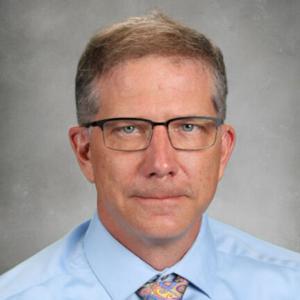Education
Wisconsin and Iowa Schools Tackle Open Enrollment Challenges

Education leaders in Wisconsin and Iowa are taking strategic steps to address the challenges of open enrollment, where students transfer between districts. The Platteville School District, located in Wisconsin, has seen a concerning shift in enrollment trends. Starting in the 2020-2021 academic year, the district began losing more students than it gained through open enrollment. As of the 2023-2024 school year, the Wisconsin Department of Public Instruction reported that Platteville lost 48 more students than it enrolled.
Superintendent Jim Boebel of the Platteville School District has initiated proactive measures to understand this deficit. He recently conducted a survey targeting families who have chosen to enroll their children in other districts. “Our attempt was to have a conversation with each family that enrolled in and out,” Boebel stated. This dialogue aims to reveal the reasons behind families’ decisions and to inform future strategies.
Funding Implications of Open Enrollment
The financial ramifications of open enrollment are significant. In both Wisconsin and Iowa, public school funding is closely tied to enrollment numbers. When a student transfers to a new district, the original district loses funding while the new one gains it. This dynamic has prompted educational leaders to analyze their enrollment trends carefully. In Illinois, open enrollment is limited, particularly for interdistrict transfers, making the situation in Wisconsin and Iowa somewhat unique.
Districts with declining open enrollment are working to reverse this trend, while those with positive numbers are focused on maintaining their success. Troy Maggied, executive director of the Southwestern Wisconsin Regional Planning Commission, emphasized the importance of understanding why families choose to enroll elsewhere. “Each district has to think really hard about why kids want to go there,” Maggied said. “Any business would ask why they’re losing customers. School districts should also ask what is going on.”
The Southwestern Wisconsin Regional Planning Commission is assisting in analyzing the survey data collected by Boebel’s team, ensuring an unbiased approach to interpreting the results. Boebel indicated that the primary goal is to leverage this data to enhance educational outcomes: “The first goal is to learn and take that data and improve how kids learn.”
Success Stories and Strategies
The Cuba City School District, under the leadership of Superintendent Aaron Olson, experienced a similar open enrollment deficit in the 2017-2018 academic year. Responding to the school board’s concerns, Olson took action by reaching out to families directly. His efforts paid off, as the district welcomed 21 more students than it lost in the following year, and it has maintained a positive enrollment trend since then.
Olson credits the district’s communications team for strengthening the relationship between staff and the community. “One thing we stress a lot to staff is if something good happens in your classroom, share it and our communications team will put it out on social media,” he explained. The influx of students through open enrollment has provided Cuba City with approximately $450,000 in additional funding annually, significantly impacting the district’s budget.
The Potosi School District, with around 338 students, also boasts a successful open enrollment strategy. Superintendent Kurt Cohen attributes this success to the district’s diverse academic and extracurricular offerings. “We’ve always prided ourselves on offering as much as we can,” Cohen noted, expressing hope that they can maintain their positive enrollment trend.
In Iowa, the Western Dubuque Community School District has reported an open enrollment surplus of approximately 297 students for the 2024-2025 school year, according to certified enrollment data from the Iowa Department of Education. Superintendent Dan Butler highlighted the district’s unique geographical advantage, offering programming akin to larger urban areas while maintaining a small-town atmosphere. “We’re fortunate we can offer the same opportunities as those bigger districts,” Butler stated.
Conversely, the Dubuque Community School District has faced a growing enrollment deficit, losing around 315 students, many of whom are transferring to Western Dubuque. Chief Communication Officer Mike Cyze indicated that much of the migration is influenced by geographic factors, particularly the population growth in suburban areas on Dubuque’s western edge. To combat this trend, the district has focused on improving its enrollment services and enhancing communications about the positive developments within the schools.
As districts in both Wisconsin and Iowa navigate the complexities of open enrollment, the drive to understand and adapt to these trends remains paramount. By employing data-driven strategies and fostering community relationships, educators aim not only to retain students but also to improve the overall quality of education in their districts.
-

 Technology5 months ago
Technology5 months agoDiscover the Top 10 Calorie Counting Apps of 2025
-

 Technology3 weeks ago
Technology3 weeks agoOpenAI to Implement Age Verification for ChatGPT by December 2025
-

 Health3 months ago
Health3 months agoBella Hadid Shares Health Update After Treatment for Lyme Disease
-

 Health3 months ago
Health3 months agoAnalysts Project Stronger Growth for Apple’s iPhone 17 Lineup
-

 Health4 months ago
Health4 months agoErin Bates Shares Recovery Update Following Sepsis Complications
-

 Technology5 months ago
Technology5 months agoDiscover How to Reverse Image Search Using ChatGPT Effortlessly
-

 Technology3 months ago
Technology3 months agoElectric Moto Influencer Surronster Arrested in Tijuana
-

 Technology5 months ago
Technology5 months agoMeta Initiates $60B AI Data Center Expansion, Starting in Ohio
-

 Technology2 months ago
Technology2 months agoDiscover 2025’s Top GPUs for Exceptional 4K Gaming Performance
-

 Technology5 months ago
Technology5 months agoRecovering a Suspended TikTok Account: A Step-by-Step Guide
-

 Health5 months ago
Health5 months agoTested: Rab Firewall Mountain Jacket Survives Harsh Conditions
-

 Lifestyle5 months ago
Lifestyle5 months agoBelton Family Reunites After Daughter Survives Hill Country Floods





















